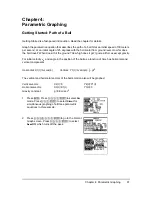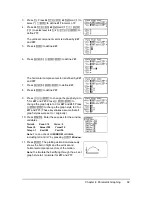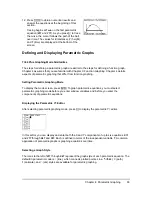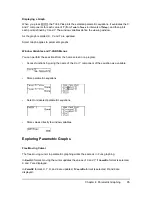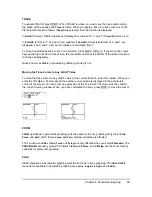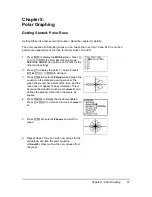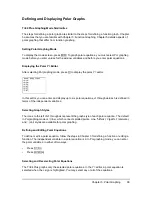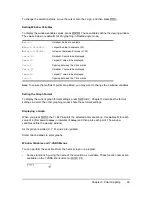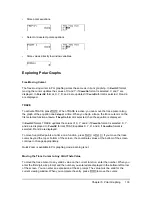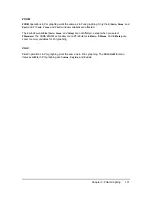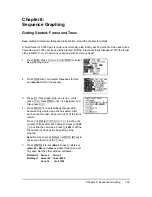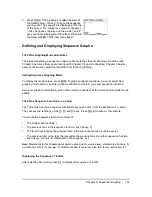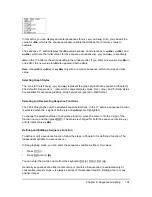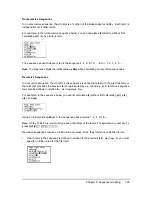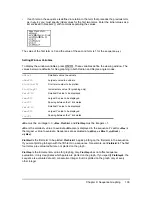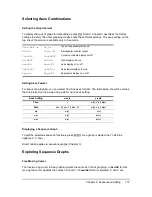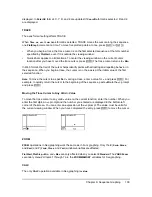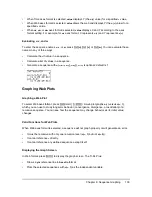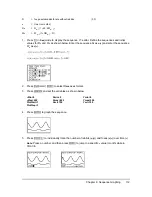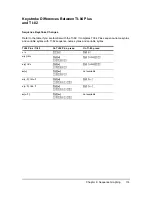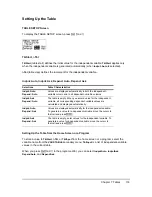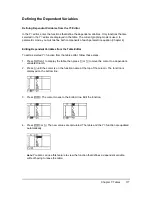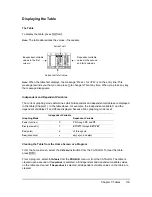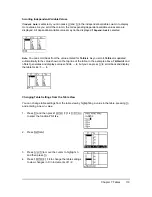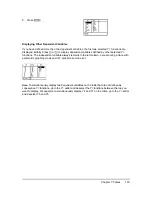
Chapter 6: Sequence Graphing
105
Nonrecursive Sequences
In a nonrecursive sequence, the
n
th term is a function of the independent variable
n
. Each term is
independent of all other terms.
For example, in the nonrecursive sequence below, you can calculate
u(5)
directly, without first
calculating
u(1)
or any previous term.
The sequence equation above returns the sequence 2, 4, 6, 8, 10, … for n = 1, 2, 3, 4, 5, … .
Note:
You may leave blank the initial value
u(
n
Min)
when calculating nonrecursive sequences.
Recursive Sequences
In a recursive sequence, the
n
th term in the sequence is defined in relation to the previous term or
the term that precedes the previous term, represented by
u(
n
N
1)
and
u(
n
N
2)
. A recursive sequence
may also be defined in relation to
n
, as in
u(
n
)=u(
n
N
1)+
n
.
For example, in the sequence below you cannot calculate
u(5)
without first calculating
u(1)
,
u(2)
,
u(3)
, and
u(4)
.
Using an initial value
u(
n
Min) = 1
, the sequence above returns 1, 2, 4, 8, 16, ... .
Note:
On the TI-84 Plus, you must type each character of the terms. For example, to enter
u(
n
N
1)
,
press
y
[u]
£
„
¹
À
¤
.
Recursive sequences require an initial value or values, since they reference undefined terms.
•
If each term in the sequence is defined in relation to the previous term, as in
u(
n
N
1)
, you must
specify an initial value for the first term.

